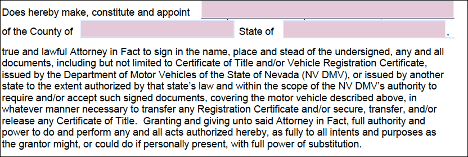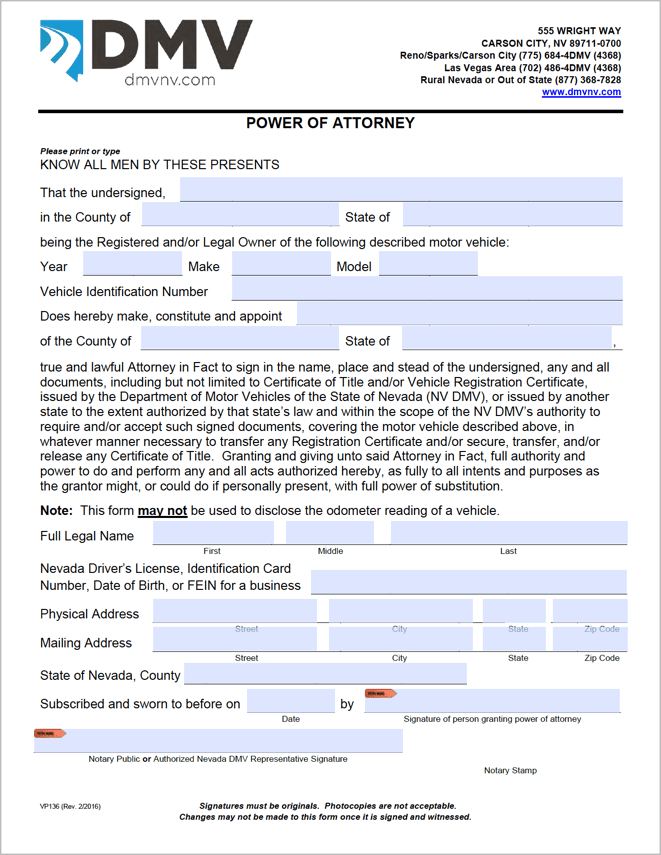Nevada Motor Vehicle Power of Attorney (VP136)
A Nevada motor vehicle power of attorney (Form VP136) is a legal document that gives a representative the authority to sign paperwork and complete tasks for a vehicle owner or business. The person completing the tasks, known as the attorney-in-fact, must follow the instructions provided by the owner. The Nevada Department of Motor Vehicles (DMV) requires the owner to file the form with the state. Once filed, the attorney-in-fact can apply for the vehicle’s title and registration, transfer ownership, or carry out other specified duties.
| Signing requirements: The vehicle owner and notary public (or DMV representative) must sign the form. |
What is a Nevada Motor Vehicle POA?
A Nevada motor vehicle power of attorney warrants an authorized person to take care of car-related matters for the principal. The form gives the attorney-in-fact limited power, meaning that they can only carry out requested duties. If the attorney-in-fact acts beyond their authority, they become responsible. As a result, the owner can send them to court, request reimbursement, or take other legal action.
The document becomes null once the attorney-in-fact carries out the tasks. Alternatively, the owner can cancel the agreement by completing a revocation power of attorney. They do not need a specific reason to terminate it and can do so at any time. Furthermore, the state does not allow the owner to make changes, meaning they must create and sign a new form instead.
Nevada law does not allow the owner, attorney-in-fact, or any other party to disclose the vehicle’s odometer reading using a power of attorney. However, they can release the information using a federal odometer disclosure statement form. The DMV does not accept photocopies; therefore, they must submit the original version with the owner’s signature. Another person can only sign in place of the principal if another power of attorney authorizes them to do so.
How to Write
Download: PDF
Step 1 – Owner and Type of Vehicle
Write the car owner’s name on the first line, then fill in the owner’s county and state. Provide the car’s year, make, model, and Vehicle Identification Number (VIN).

Step 2 – Agent Information
Specify the agent’s name (attorney-in-fact), and provide his or her county and state.

Step 3 – Owner Information
The owner writes the following in this section:
- Full legal name
- Nevada driver’s license, ID card number, date of birth, or FEIN (for a business)
- Physical address
- Mailing address
- County

Step 4 – Signature and Notarization
Using a Notary Public to authenticate the signing, the owner must endorse the form and write the date.

